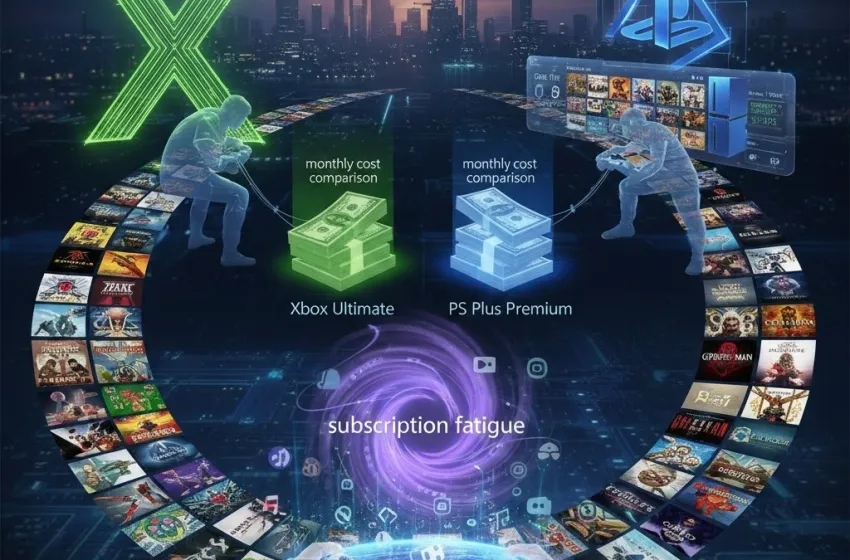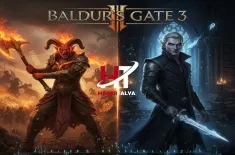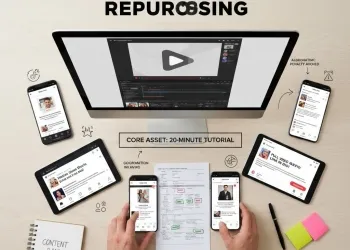Compare monthly cost comparison, cloud streaming impact, and fight subscription fatigue.
The shift from physical ownership to on-demand access has been one of the most profound revolutions in entertainment over the last two decades. From music (Spotify) to movies and television (Netflix), the subscription model dominates. The video game industry, the final frontier for this seismic change, has now fully embraced this model, ushering in The New Era of Gaming Subscription Services.
This era is characterized by a fierce competition between platform giants, most notably Microsoft and Sony, to offer the most compelling library of games for a recurring fee. This competition has led to an explosion in consumer choice, fundamentally changing content consumption habits and challenging the very definition of game ownership. The key to navigating this landscape lies in a meticulous breakdown of the cost-to-value proposition of the major players, and critically, how these services measure up against the looming threat of subscription fatigue.
The Reign of Microsoft: Decoding the Xbox Game Pass Value
Microsoft’s Xbox Game Pass is widely considered the disruptive force that defined this new era. Its central value proposition is simple, aggressive, and highly appealing: new, first-party titles available on Day One of release. This commitment includes major franchises like Halo, Forza, and Starfield, instantly differentiating it from traditional subscription models that rely solely on back-catalog titles.
Tiers, Features, and the Core Value
Xbox Game Pass is segmented into multiple tiers, each designed to capture a different segment of the market, from PC enthusiasts to console and mobile players. The highest and most comprehensive tier, Xbox Game Pass Ultimate, bundles every service Microsoft offers:
- Access: A massive, rotating library of hundreds of high-quality games on Console, PC, and Mobile/Tablet.
- Day One Access: All new first-party Xbox Game Studios titles.
- Extra Perks: Inclusion of EA Play and Ubisoft Classics, substantially maximizing library access beyond Microsoft's own offerings.
- Multiplayer: Xbox Live Gold (required for online console multiplayer) is included.
- Cloud Gaming: Unlimited access to cloud streaming (xCloud) on various devices.
The sheer volume of games and the promise of not needing to buy major new releases is the core of the Xbox Game Pass value. For a dedicated gamer who typically buys four to five major titles a year, the monthly fee is often recouped in the first month alone, making the decision an easy one. This value is strategically designed to drive engagement with the entire Xbox ecosystem, from console sales to the burgeoning mobile/PC market through cloud services.
The PlayStation Counter: Understanding the PS Plus Tiers
Sony’s response to the Game Pass challenge was the 2022 overhaul of its service, resulting in a three-tiered structure designed to compete directly in the “library” space while maintaining its traditional strengths. The PS Plus tiers—Essential, Extra, and Premium/Deluxe—offer a ladder of benefits that scale with the monthly cost comparison.
| PS Plus Tier | Primary Benefit & Monthly Cost | Value Proposition |
|---|---|---|
| Essential | Online Multiplayer, Monthly Games (2-3 free games per month, keep them), Discounts. | A continuation of the traditional PS Plus model; necessary for online play. |
| Extra | All Essential benefits PLUS a Game Catalogue of up to 400 downloadable PS4/PS5 titles. | Sony's direct competitor to the core Game Pass library access for modern console owners. |
| Premium/Deluxe | All Extra benefits PLUS a Classics Catalogue (PS1, PS2, PSP, PS3) and Time-Limited Game Trials. | Premium value is tied to nostalgia, the ability to play classic games via cloud streaming (PS3 titles are streaming-only), and the "try-before-you-buy" feature. |
The key difference lies in the day-one strategy: Sony generally does not include its major first-party exclusives, such as Spider-Man or God of War, on the service on their launch day. Instead, it leverages its deep and critically acclaimed back catalog and the inclusion of Game Trials to add value to the higher tiers. The PS Plus tiers are priced to be competitive, with the Extra tier being the sweet spot for many, offering hundreds of great games without the top-end Premium cost, which often relies on a stable cloud streaming connection for the classic titles.
The Disruptive Force of Cloud Streaming
The long-term value proposition of both major services is intrinsically tied to cloud streaming. This technology eliminates the need for expensive downloads and even powerful hardware, making a high-quality gaming library accessible on phones, tablets, and smart TVs.
For Xbox Game Pass Ultimate, xCloud transforms the service into a platform-agnostic product. You can play Day One releases on your phone during a commute or on a lower-spec PC, instantly democratizing access to the full Xbox Game Pass value. This portability radically changes content consumption habits, allowing users to dip into games for shorter sessions across multiple devices.
For PlayStation, cloud streaming (available in the Premium/Deluxe tier) is primarily used to deliver the Classics Catalogue, specifically PS3 games which cannot be emulated easily on the PS5 architecture. While both services utilize the cloud, Microsoft's approach is forward-looking, applying it to new releases, whereas Sony’s is more focused on preserving legacy content.
The Economic Reality: Monthly Cost Comparison
The discussion of value is incomplete without a direct monthly cost comparison of the premium offerings (USD prices are used for a global baseline):
| Service | Tier | Annual Cost Equivalent | Feature Focus |
|---|---|---|---|
| Xbox | Ultimate | ~$359.88 | Day One Games, Console/PC/Cloud, EA Play, Ubisoft Classics, Online Multiplayer. |
| PlayStation | Premium | ~$199.99 | Catalogue (Modern Classics), Cloud Streaming, Game Trials, Online Multiplayer. |
At the high end, the price difference is significant. The justification for the higher Xbox Game Pass value is the inclusion of every major new release—a perceived saving of $70 per title—which, for a player who buys three new games a year, justifies the extra monthly cost comparison right away. PS Plus Premium, while cheaper, offers better long-term value through its Classics, but the player must still buy a new Sony exclusive on launch day.
The Final Challenge: Subscription Fatigue
As users accumulate services for media, software, and retail, subscription fatigue has become a critical threat. The average consumer is managing dozens of recurring payments, leading to a constant re-evaluation of perceived value.
Gaming services combat this fatigue by:
- High-Quality, Essential Content: Xbox Game Pass value is deemed "essential" by many because it solves the high initial cost of gaming.
- Tiered Options: The PS Plus tiers allow users to scale back—canceling Premium to drop to Essential, ensuring they retain online multiplayer without abandoning the ecosystem entirely. This flexibility helps fight the "all-or-nothing" nature that causes consumers to churn completely due to subscription fatigue.
- Maximizing Library Access & Perks: The inclusion of EA Play, Fortnite Crew, and other non-gaming perks (like Discord Nitro trials) acts as a powerful adhesive, adding supplementary Xbox Game Pass value beyond the core game library and helping users consolidate their spending.
The new era of gaming subscriptions has permanently shifted consumer behavior. Players are more willing to sample a vast array of games (maximizing library access) rather than committing to a single title. They have become 'renters' of content, valuing variety and convenience over permanent ownership. The ultimate victor in this battle will be the service that consistently demonstrates that its value—whether through Day One content (Xbox) or an indispensable back catalog and trials (PlayStation)—is high enough to overcome the inevitable, wallet-draining reality of subscription fatigue.



































